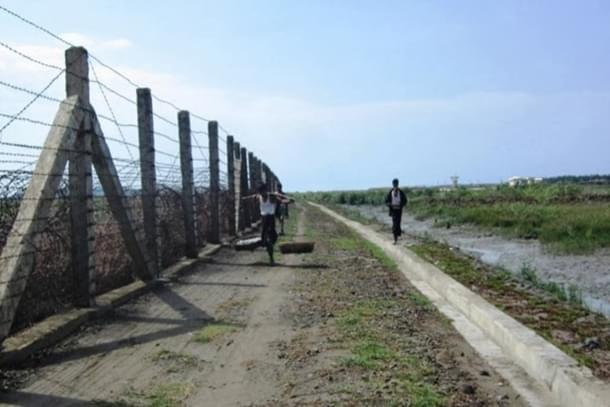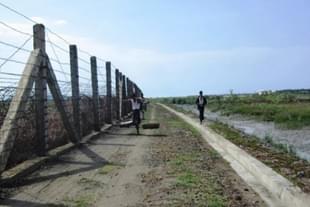News Brief
Explained: The Differing Responses To Amit Shah's Announcement On Border-Fencing With Myanmar
Nayan Dwivedi
Feb 07, 2024, 05:04 PM | Updated 05:04 PM IST
Save & read from anywhere!
Bookmark stories for easy access on any device or the Swarajya app.


Recently, Union Home Minister Amit Shah had reiterated Prime Minister Narendra Modi-led government's commitment to building impenetrable borders by announcing the construction of a fence along the entire 1,643-km-long India-Myanmar border.
In a social media post on X, Amit shah stated, "Two pilot projects of fencing through a Hybrid Surveillance System (HSS) are under execution. They will fence a stretch of 1 km each in Arunachal Pradesh and Manipur. Additionally, fence works covering approx 20 km in Manipur have also been approved, and the work will start soon."
However, as Meitei organisations welcomed the decision by the Centre, Naga and Kuki bodies in Manipur expressed their opposition to the decision, deeming it unacceptable.
While Manipur shares around 398 km of its border with Myanmar, only 10 km has been fenced so far.
Coordinating Committee (COCOMI), a joint body representing valley-based civil societies, hailed the decision to fence the border but stressed the importance of safeguarding the state's territorial integrity throughout the process.
Also Read: Sensing Change In The Wind? 15 Former MLAs From Tamil Nadu Join BJP
Assistant Media Coordinator of COCOMI, M Dhananjoy, highlighted the adverse effects of porous borders, citing rampant drug smuggling and illegal immigration as pressing concerns threatening the region's stability and demographic composition.
As to objections raised by some groups that fencing will cut off their relatives, Dhananjoy said, "Meiteis also have a significant population in Myanmar due to historical events. But we are not making it an issue for the greater interest of the state."
However, Naga bodies, including the United Naga Council and Tangkhul Naga Long, have expressed their reservations, asserting that border fencing is unacceptable.
President Ng Lorho emphasised the need for alternative strategies to combat drug smuggling and illegal immigration.
Similarly, other Kuki organisations voiced opposition to the sudden implementation of border fencing, contending that it fails to address the multifaceted challenges effectively.
Why Are Kuki-Zo-Naga People Opposed To The Move?
According to Sominthang Doungel, a leader of Kuki Inpi Manipur, an apex body of the Kukis in Manipur: "The Kuki people have been living in the northwestern part of Myanmar and the northeastern part of India much before there was an international boundary."
He adds, "There were no Manipur, Nagaland, or Mizoram in those days....The international boundary line between India and Myanmar was created by the British government without consulting the Kukis. Building fences along the India-Myanmar border will divide the Kuki people who are living in India and Myanmar and also deprive them of all connection and cooperation between them."
Nayan Dwivedi is Staff Writer at Swarajya.





